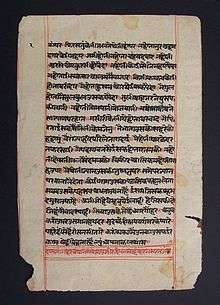Fiber crop
| Part of a series on |
| Fiber |
|---|
 |
| Natural fibers |
| Man-made fibers |
|
Fiber crops are field crops grown for their fibres, which are traditionally used to make paper,[1] cloth, or rope. The fibers may be chemically modified, like in viscose (used to make rayon and cellophane). In recent years materials scientists have begun exploring further use of these fibers in composite materials.
Fiber crops are generally harvestable after a single growing season, as distinct from trees, which are typically grown for many years before being harvested for such materials as wood pulp fiber or lacebark. In specific circumstances, fiber crops can be superior to wood pulp fiber in terms of technical performance, environmental impact or cost.[2]
There are a number of issues regarding the use of fiber crops to make pulp.[3] One of these is seasonal availability. While trees can be harvested continuously, many field crops are harvested once during the year and must be stored such that the crop doesn't rot over a period of many months. Considering that many pulp mills require several thousand tonnes of fiber source per day, storage of the fiber source can be a major issue.
Botanically, the fibers harvested from many of these plants are bast fibers; the fibers come from the phloem tissue of the plant. The other fiber crop fibers are seed padding, leaf fiber, or other parts of the plant.
Fiber sources

Before the industrialisation of the paper production the most common fibre source was recycled fibres from used textiles, called rags. The rags were from hemp, linen and cotton.[4] A process for removing printing inks from recycled paper was invented by German jurist Justus Claproth in 1774.[4] Today this method is called deinking. It was not until the introduction of wood pulp in 1843 that paper production was not dependent on recycled materials from ragpickers.[4]
Fiber crops
- Bast fibers (Stem-skin fibers)
- Esparto, a fiber from a grass
- Jute, widely used, it is the cheapest fiber after cotton
- Flax, produces linen
- Indian hemp, the Dogbane used by native Americans
- Hemp, a soft, strong fiber, edible seeds
- Hoopvine, also used for barrel hoops and baskets, edible leaves, medicine
- Kenaf, the interior of the plant stem is used for its fiber. Edible leaves.
- Linden Bast
- Nettles
- Ramie, a nettle, stronger than cotton or flax, makes "China grass cloth"
- Papyrus, a pith fiber, akin to a bast fiber
- Leaf fibers
- Abacá, a banana, producing "manila" rope from leaves
- Sisal, often termed agave
- Bowstring Hemp, an old use of a common decorative agave, also Sansevieria roxburghiana, Sansevieria hyacinthoides
- Henequen, an agave. A useful fiber, but not as high quality as sisal
- Phormium, “New Zealand Flax”
- Yucca, an agave
- Seed fibers and fruit fibers
- Other fibers (Leaf, fruit, and other fibers)
- Bamboo fiber, a viscose fiber like rayon, technically a semi-synthetic fiber
Fiber dimensions
| Source of pulp | Fiber length, mm | Fiber diameter, µm |
|---|---|---|
| Softwood | 3.1 | 30 |
| Hardwood | 1.0 | 16 |
| Wheat straw | 1.5 | 13 |
| Rice straw | 1.5 | 9 |
| Esparto grass | 1.1 | 10 |
| Reed | 1.5 | 13 |
| Bagasse | 1.7 | 20 |
| Bamboo | 2.7 | 14 |
| Cotton | 25.0 | 20 |
References
- ↑ Goyal, Hari. "Multiple references to non-wood fibers for paper". PaperOnWeb, PULP & PAPER RESOURCES & INFORMATION SITE. Retrieved 2007-10-19.
- ↑ "Agripulp: pulping agricultural crops". Retrieved 2007-10-03.
- ↑ "Nonwood Alternatives to Wood Fiber in Paper". Archived from the original on 2007-07-08. Retrieved 2007-10-03.
- 1 2 3 Göttsching, Lothar; Pakarinen, Heikki (2000), "1", Recycled Fiber and Deinking, Papermaking Science and Technology, 7, Finland: Fapet Oy, pp. 12–14, ISBN 952-5216-07-1
External links
- Waynesword Plant Fibers Accessed 2010-11-23